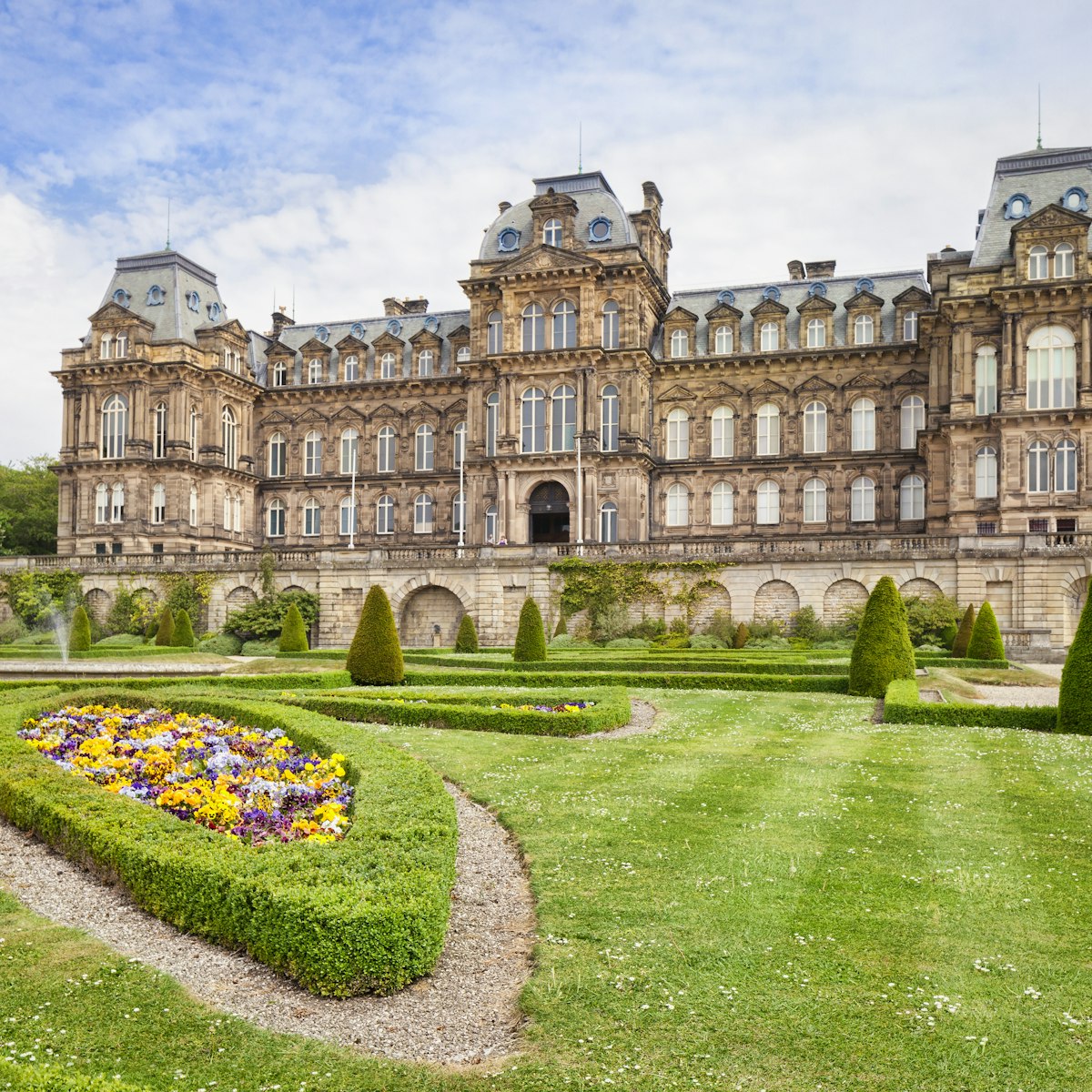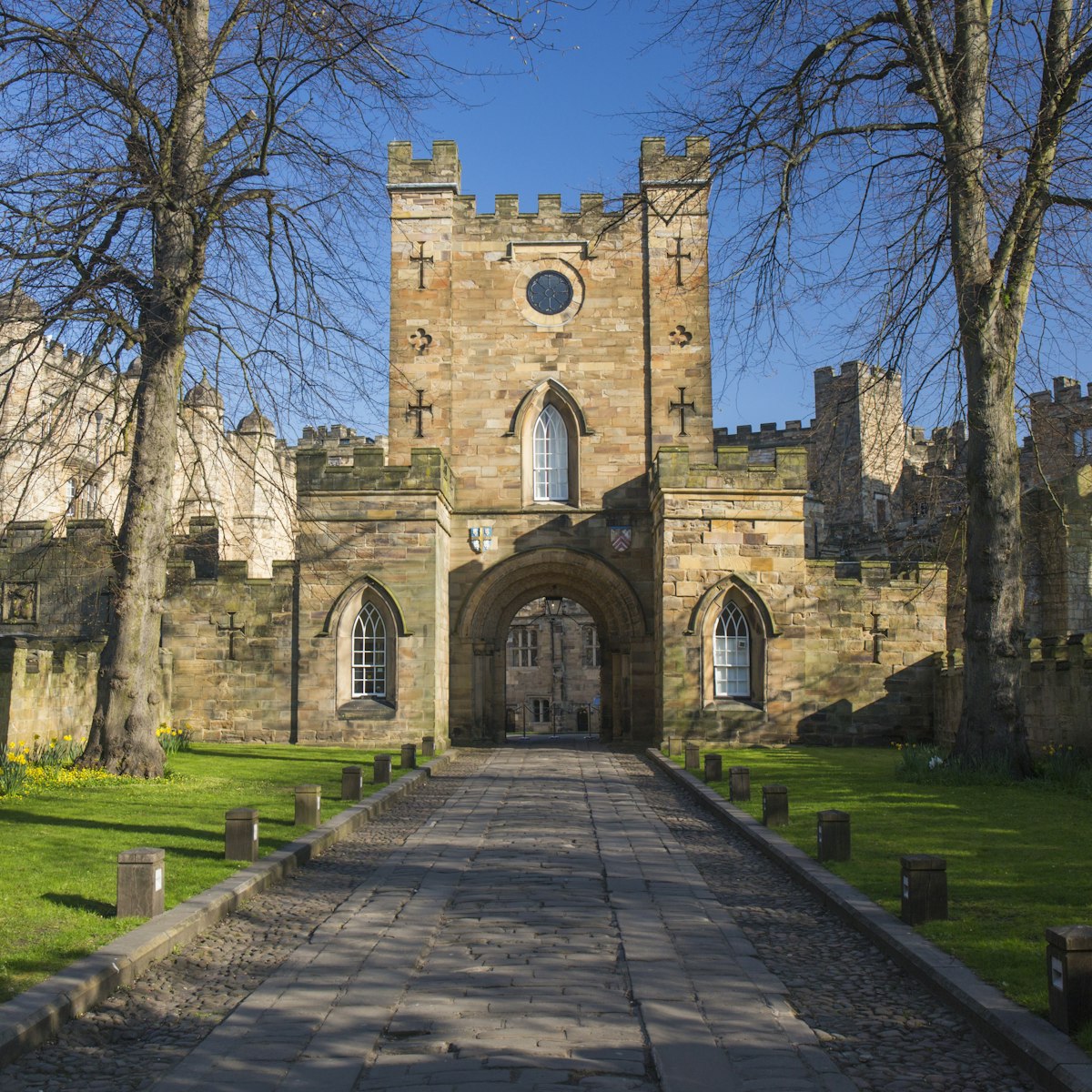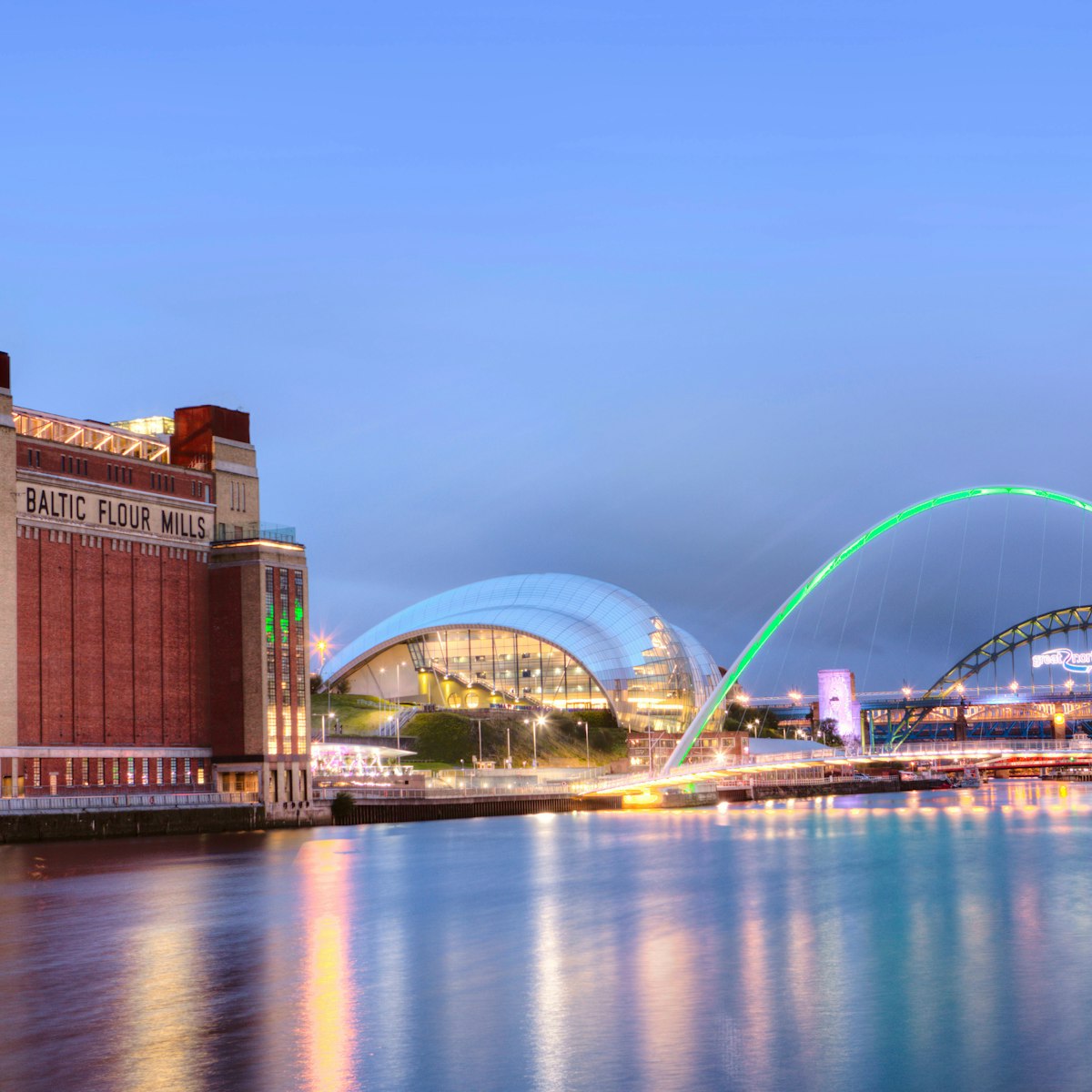Monumental Durham Cathedral is the definitive structure of the Anglo-Norman Romanesque style, a resplendent monument to the country’s ecclesiastical history and, since 1986, a Unesco World Heritage Site. Beyond the main door – and the famous Sanctuary Knocker, which medieval felons would strike to gain 37 days asylum within the cathedral before standing trial or leaving the country – the interior is spectacular. Highly worthwhile guided tours last one hour.
Durham was the first European cathedral to be roofed with stone-ribbed vaulting, which upheld the heavy stone roof and made it possible to build pointed transverse arches – a great architectural achievement. The central tower dates from 1262, but was damaged in a fire caused by lightning in 1429 and unsatisfactorily patched up until it was entirely rebuilt in 1470. The western towers were added in 1217–26.
The northern side of the beautiful, 1175-built Galilee Chapel features rare surviving examples of 12th-century wall painting (thought to feature portraits of Sts Cuthbert and Oswald). Galilee Chapel also contains the tomb of the Venerable Bede, the 8th-century Northumbrian monk turned historian: his Ecclesiastical History of the English People is still the prime source of information on the development of early Christian Britain. Among other things, Bede introduced the AD system for the numbering of years from the birth of Jesus. He was first buried at Jarrow, but in 1022 a miscreant monk stole his remains and brought them here.
Other highlights include the 14th-century Bishop's Throne; the beautiful stone Neville Screen (1372–80), which separates the high altar from St Cuthbert's tomb; and the mostly 19th-century Cloisters where you'll find the Monk's Dormitory, now a library of 30,000 books, with Anglo-Saxon carved stones. There are audiovisual displays on the building of the cathedral and the life of St Cuthbert, and a rolling program of exhibitions.



